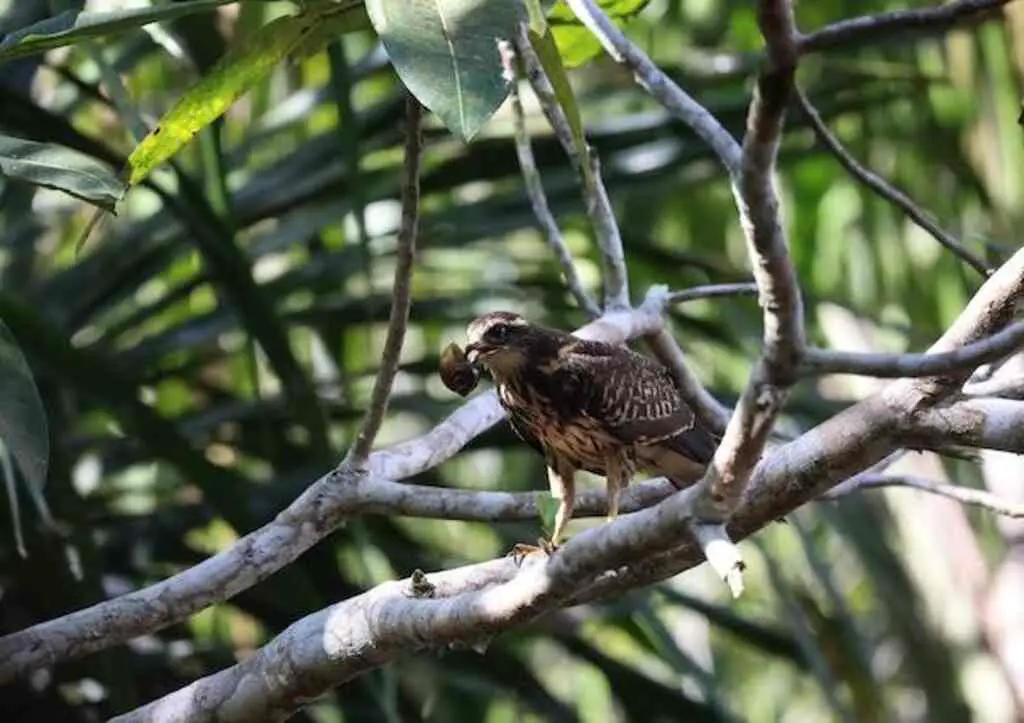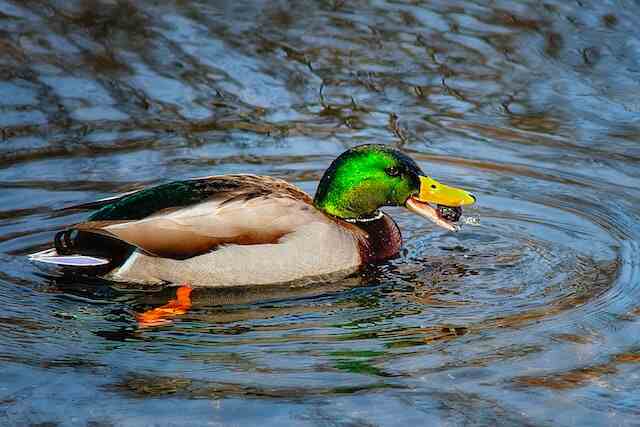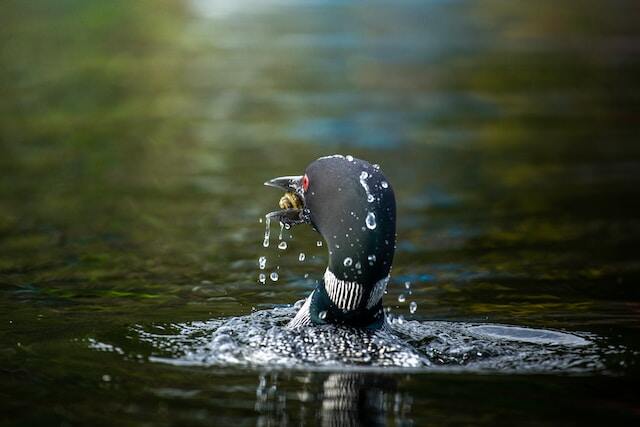What Birds Eat Snails? Prepare to be amazed as we embark on a journey into the quirky world of avian gastronomy.
From stealthy snail slurpers to delicate shell-crunching connoisseurs, we’ll uncover the surprising bird species that feast on these slimy delicacies.
Get ready to dive into the fascinating world of snail-eating birds.
Table of Contents
- 1 Key Takeaways
- 2 What Birds Eat Snails
- 3 Unique Hunting Techniques
- 4 Benefits of Snails in Their Diet
- 5 Adaptations for Snail Consumption
- 6 Snail-Feeding Behaviors
- 7 Snails as a Nutrient-Rich Food Source
- 8 Impact on Bird Populations
- 9 Snail Consumption and Habitat Conservation
- 10 Snail-Eating Birds in Different Ecosystems
- 11 Role of Snails in the Food Chain
- 12 Fascinating Facts about Birds and Snails
- 13 Conclusion
- 14 Frequently Asked Questions
- 14.1 How do snail-eating birds locate snails in their environment?
- 14.2 Are there any risks or potential dangers associated with eating snails for birds?
- 14.3 Are there any bird species that exclusively feed on snails?
- 14.4 Do snail-eating birds have any specific adaptations in their beaks or digestive systems to consume snails?
- 14.5 How do snail-eating birds affect the population and distribution of snails in their habitats?
- 15 Author
Key Takeaways
- Birds rely on snails as an important food source, providing essential nutrients and contributing to their overall energy intake.
- Different bird species have unique hunting techniques to capture snails, such as probing, hammering, pecking, and crushing.
- Snails are rich in protein, calcium, iron, and omega-3 fatty acids, making them a valuable and high-calorie food source for birds.
- Bird predation on snails regulates snail populations, influencing their abundance and distribution, which in turn affects nutrient cycling and energy flow within ecosystems.
What Birds Eat Snails
Certain bird species, such as thrushes and blackbirds, have been observed consuming snails as part of their diet, using their sharp beaks to extract the mollusks from their shells with precision and efficiency.
The distribution of these bird species varies across different regions, with some being more prevalent in temperate climates while others are found in tropical areas.
Snails constitute an important food source for these birds, as they provide essential nutrients and contribute to their overall energy intake.
Additionally, the consumption of snails by birds plays a crucial role in maintaining ecological balance, as it helps regulate snail population levels and prevent potential damage to vegetation.
Understanding the dietary preferences and foraging behaviors of bird species that consume snails is essential for comprehending their ecological importance within their respective ecosystems.
Transitioning into the subsequent section about unique hunting techniques, it is fascinating to explore the diverse strategies employed by these birds to capture their prey.
Unique Hunting Techniques
Notably, some avian species employ innovative strategies to capture their prey, such as employing a mesmerizing dance of precision and speed, resulting in the mollusk’s demise.
These unique hunting strategies are employed by various predatory bird species, allowing them to successfully capture and consume snails.
- Stealthy Approach: Certain birds, like the Eurasian oystercatcher, approach their prey silently, taking advantage of their cryptic coloration to blend in with their surroundings. This allows them to get close to the snails without alarming them.
- Hammering Technique: The blacksmith plover has developed a remarkable hunting technique. It uses its long beak to repeatedly strike the snail’s shell, eventually breaking it open and accessing the tasty morsel inside.
- Tool Use: The woodpecker finch of the Galápagos Islands is known for using tools to extract snails from their shells. They use twigs or cactus spines to pry the snails out, demonstrating exceptional problem-solving skills.
These unique hunting techniques showcase the remarkable adaptability and resourcefulness of these avian predators.
Moving on to the benefits of snails in their diet, these birds rely on snails as a nutritious food source that provides essential nutrients for their survival.
Benefits of Snails in Their Diet
One of the remarkable aspects of the avian predators’ diet is the significant nutritional value that snails provide, ensuring their survival and overall well-being.
Snails are rich in essential nutrients such as protein, calcium, and iron, which are vital for the birds’ growth, development, and reproductive success.
Additionally, snails contain high levels of omega-3 fatty acids, which promote cardiovascular health and enhance cognitive function in birds.
Moreover, snails are an excellent source of energy due to their high calorific content.
This makes them an ideal food choice for avian predators, as it allows them to sustain their energy levels during extended hunting periods.
Furthermore, the consumption of snails by birds has indirect benefits for humans as well.
Snail farming has become an increasingly popular industry, and snail consumption in human diets has been associated with various health benefits, including improved immune function and reduced risk of chronic diseases.
Understanding the benefits of snails in the avian predators’ diet provides valuable insight into the adaptations for snail consumption by these birds.
Adaptations for Snail Consumption
Snail hunting adaptations in birds are diverse and include modifications in beak morphology, feeding techniques, and digestive systems.
For instance, some bird species have evolved long, slender beaks with pointed tips that allow them to probe into snail shells and extract the soft body parts.
Others have developed strong, robust beaks capable of crushing snail shells to access the nutritious content inside.
Additionally, birds that consume snails often have specialized digestive systems that can break down the calcium-rich shells. This enables them to efficiently extract nutrients from the snails and digest them.
Understanding these snail consumption patterns and adaptations in birds provides valuable insights into the co-evolutionary relationship between predators and prey.
Transitioning into the subsequent section about ‘snail-feeding behaviors’, these adaptations also influence the strategies birds employ to locate, capture, and consume snails.
Snail-Feeding Behaviors
Snail-feeding behaviors encompass a range of strategies employed by certain predators to locate, capture, and consume their calcium-rich prey.
These behaviors include:
- Probing: Some bird species use their long bills to probe the ground or crevices in search of snails. This method allows them to detect hidden snails and extract them from their hiding places.
- Hammering: Certain birds, such as woodpeckers, use their strong beaks to hammer snail shells against hard surfaces, breaking them open and accessing the nutritious contents inside.
- Pecking: Some birds peck at snails to crack their shells open. This behavior requires precision and strength to ensure successful access to the snail’s soft body.
- Crushing: Other bird species, like crows, use their powerful beaks to crush snail shells and consume the contents.
Snail-feeding behaviors demonstrate the diverse adaptations that birds have developed to exploit snails as a nutrient-rich food source. These behaviors reflect the importance of snails in the diet of certain bird species and highlight the role of snails in providing essential nutrients for avian populations.
Snails as a Nutrient-Rich Food Source
Snails are not only a fascinating food source for birds, but they also offer a rich nutritional profile.
As mentioned in the previous subtopic, snails are a valuable source of calcium, which is crucial for birds’ bone health and egg production.
Additionally, snails are rich in protein, iron, and other essential minerals that support birds’ overall growth and development.
Given these nutritional benefits, snails have become an increasingly popular food source in avian farming practices.
Snail farming, or heliciculture, has emerged as a sustainable and efficient way to meet the demand for this nutrient-rich food.
In addition to being consumed by birds in the wild, snails are also used in various culinary dishes, adding a unique flavor and texture to the cuisine.
The incorporation of snails into avian diets and their culinary uses highlights the diverse and versatile nature of these creatures.
This section will explore the impact of snail consumption on bird populations and their ecosystems.
Impact on Bird Populations
The consumption of snails by certain species has had a profound impact on the delicate balance of bird populations and their ecosystems.
Birds that feed on snails play a crucial role in regulating snail populations, thereby influencing the abundance and distribution of these mollusks within their habitats.
Research has shown that bird predation can significantly affect the density and size structure of snail populations, as well as their reproductive patterns and overall community dynamics.
For example, studies have demonstrated that bird foraging can lead to a decline in snail abundance, resulting in cascading effects on other organisms that rely on snails as a food source.
Additionally, changes in snail population dynamics can alter nutrient cycling and energy flow within the ecosystem, further shaping community structure and ecosystem function.
Understanding the impact of bird predation on snail populations is crucial for effective habitat conservation and management strategies.
By conserving habitats that support both birds and snails, we can ensure the preservation of these intricate ecological relationships.
Snail Consumption and Habitat Conservation
Implications for habitat conservation and management arise due to the significant ecological role played by certain bird species that consume snails.
These birds can have a profound impact on snail population dynamics and consequently on the overall health and balance of ecosystems.
Habitat loss poses a threat to the survival of both snails and the birds that rely on them as a food source.
Understanding the relationship between snail consumption and habitat conservation is crucial for effective management strategies.
To illustrate this relationship, the following table summarizes studies on the snail consumption by different bird species and its implications for habitat conservation:
| Bird Species | Snail Consumption | Impact on Snail Populations | Implications for Habitat Conservation |
|---|---|---|---|
| Species A | High | Decreased snail abundance | Importance of preserving snail habitats |
| Species B | Moderate | No significant effect | Conservation efforts should focus on other factors |
| Species C | Low | No effect | Snail population dynamics not influenced |
These findings highlight the need to prioritize habitat conservation efforts to mitigate the negative consequences of habitat loss on snail-eating birds and the ecological balance of ecosystems.
Understanding the relationship between snail consumption and habitat conservation can guide management strategies to preserve these important bird populations and the services they provide.
Transitioning into the subsequent section about ‘snail-eating birds in different ecosystems’, it is important to examine the factors that influence the distribution and abundance of these birds in various habitats.
Snail-Eating Birds in Different Ecosystems
Examining the distribution and abundance of snail-eating birds in different ecosystems allows for a comprehensive understanding of their role and importance in maintaining ecological balance.
Bird migration plays a significant role in the distribution of snail-eating birds, as they move between different habitats in search of suitable food sources.
These birds are found in various ecosystems, including wetlands, forests, and grasslands.
In wetland ecosystems, snail-eating birds such as herons and egrets can be commonly observed, as they feed on snails that thrive in these habitats.
In forests, species like woodpeckers and thrushes are known to consume snails as part of their diet. Grasslands also provide a suitable habitat for snail-eating birds like sparrows and starlings.
Understanding the distribution of these birds in different ecosystems is crucial for assessing their impact on snail predation and overall ecosystem dynamics.
This knowledge can contribute to informed conservation efforts and maintaining a healthy ecological balance.
Transitioning to the subsequent section about the role of snails in the food chain, it is important to recognize the interconnectedness of species within ecosystems.
Role of Snails in the Food Chain
Snails occupy a significant position in the food chain, serving as a vital link between primary producers and higher trophic levels.
They play a crucial role in the ecosystem by consuming decaying organic matter, algae, and detritus.
As they feed, snails break down and decompose these materials, facilitating nutrient recycling and releasing essential elements back into the environment.
Additionally, snails serve as a food source for a variety of organisms, including birds, reptiles, amphibians, and small mammals.
Their ecological importance lies in their ability to control the population of algae and other primary producers, preventing overgrowth and maintaining ecosystem balance.
Furthermore, snails provide a source of calcium for animals, including birds, who require it for the development of strong eggshells.
Understanding the role of snails in the ecosystem is crucial for comprehending the intricate web of interactions that sustain life in diverse habitats.
Transitioning to the subsequent section, birds have developed fascinating adaptations to exploit snails as a food resource.
Fascinating Facts about Birds and Snails
Birds are known to play a crucial role in the control of snail populations due to their feeding habits.
The consumption of snails by birds is particularly important during the breeding season, when they require high protein levels for egg production and chick development.
Bird migration also influences the distribution of snails, as they can transport snail species to new areas. Additionally, the strength of a snail’s shell may influence the bird species that can prey upon them.
Birds with strong beaks, such as woodpeckers and thrushes, are able to crack open snail shells and access the nutritious soft tissues inside.
Overall, the relationship between birds and snails is complex and plays a significant role in maintaining ecological balance.
| Bird Species | Snail Consumption per day |
|---|---|
| Blackbird | 100 |
| Thrush | 150 |
| Woodpecker | 200 |
| Sparrow | 50 |
| Robin | 80 |
Conclusion
In conclusion, the world of avian gastronomy is full of surprises, extending beyond traditional food sources.
We’ve unraveled the captivating relationship between birds and snails, discovering the bird species that indulge in this peculiar delicacy and their unique hunting techniques.
By understanding the adaptations and ecological significance of snail-eating birds, we gain a deeper appreciation for the intricacies of nature’s web.
So, spread your wings and continue exploring the fascinating world of birds and their unexpected culinary choices.
Frequently Asked Questions
How do snail-eating birds locate snails in their environment?
Snail-eating birds locate snails in their environment through various methods. They rely on visual cues such as movement and coloration to detect snails. Additionally, they may use auditory cues or olfaction to locate snails.
Are there any risks or potential dangers associated with eating snails for birds?
Snail consumption by birds can lead to potential risks and dangers. For instance, the ingestion of snails infected with parasites or pesticides can negatively impact bird health, affecting their immune system and reproductive success.
Are there any bird species that exclusively feed on snails?
Bird species that exclusively feed on snails are known as snail specialists. These birds rely on snails as a primary food source, and their feeding behavior can have significant impacts on snail population dynamics.
Do snail-eating birds have any specific adaptations in their beaks or digestive systems to consume snails?
Snail-eating birds possess specialized beak adaptations and efficient digestive systems to consume snails. Their beaks may exhibit sharp, pointed tips or strong, crushing surfaces, while their digestive systems are equipped with acidic enzymes to break down the snail’s tough shell and extract nutrients effectively.
How do snail-eating birds affect the population and distribution of snails in their habitats?
Snail-eating birds play a crucial role in regulating snail populations and their distribution in their habitats. By preying on snails, these birds help control their numbers, preventing overpopulation and maintaining the ecological balance. Their predatory behavior contributes to the overall biodiversity and stability of the ecosystem.







